ASRock Z77 OC Formula Review: Living In The Fast Lane
by Ian Cutress on January 15, 2013 1:00 PM EST- Posted in
- Motherboards
- ASRock
- Z77
- Overclocking
ASRock Z77 OC Formula Software
Years of ASRock software has been oriented around the ASRock eXtreme Tuning Utility (AXTU), which has offered basic monitoring and fan selections alongside a series of basic overclocking tools and power saving options. Skip forward and we get implementations of XFast USB, XFast LAN and XFast RAM, all designed to speed up their various parts of the system, and then Fatal1ty ASRock boards get similar selections but with Fatal1ty branded skins. The Z77 OC Formula takes a similar approach, and our AXTU interface is reskinned as ‘OC Formula Drive’, but we get severely upgraded fan controls, options related to the temperature sensors, a memory configuration tool and another tool related to the Rapid OC buttons on board.
OC Formula Drive (OCFD)
The main hub is the reskinned AXTU in the form of the OC Formula Drive. Amazingly the reskin makes it a lot easier to read, although the navigation model is still the same as before, with a list of options on the left hand side and the rest of the options on the right. As a general feeling I find it a little cumbersome to look at, and it does not really fit well with a monitor after an OS install if the screen size has not been increased or video drivers installed. But there is an element of improvement over previous versions.
The initial OCFD menu is our basic hardware monitor listings, giving CPU speed, temperatures, fan speeds and voltages. Like with the front page of the BIOS, if something like this is presented, I also want the motherboard model, BIOS version, CPU model and memory installed information given to me.
The big change is in the fan controls:
As part of the ‘Fan-tastic Tuning’, the system will test each of the six controllable fan headers in terms of RPM against power applied. As we have mentioned a lot in the past, the fan speed and output is not directly proportional to the power applied, and at last someone at ASRock has acknowledged this. As seen in the screen shot, the fan I use follows this trend:
Having that information allows me to select my multi-point fan curve in the GUI with better accuracy. All that is missing from our interface my graph above, and the ability for hysteresis whereby the fan will stay at a higher speed as the system cools down until it reaches a certain temperature, thereby cooling down faster. It should be noted that for the fan options to stick across reboots, users should select the ‘Auto Apply’ and ‘Auto Run’ options at the bottom of the software. It also wouldn’t go amiss if ASRock supplied three or four preset fan profiles, such as Silent, Low Power, Turbo, Always On etc.
Next up in OCFD is the overclock settings, in which not much has changed over the AXTU implementation. The sliders look nicer, and we get options for hot-key overclocks by the button in the top right.
OC DNA deals with saving overclock settings, whereas IES is a one button selection to reduce power consumption by adjusting the amount of power phases being used.
The Multi-Thermal Sensor option is almost analogous to the detail given in the BIOS, whereby we get a list of temperatures and an image showing where those temperature sensors are with the corresponding values. I think it is great to have this level of detail, and all that is missing is a heat-map visual representation of these temperatures.
XFast RAM, as we have covered before on several ASRock boards, allows the user to partition part of their memory off to a RAMDisk, and adjust the system setup to use the RAMDisk for temporary files. A lot of software produces temporary files during calculations, especially when the files are large (video editing, image editing, compression) or just for quick recall at a later date (Internet Explorer), and having a fast read source (up to 5 GB/s in most cases) can speed up the response time of the system. On a personal note, the most memory I have ever used in daily use was 7.7 GB, which was while playing F1 2011 at max settings as well as having all my regular work windows/programs/Chrome tabs open at the time. Thus if users go down the 16GB/32GB route, having a RAMdisk for temporary files might not incur much of a penalty in regular usage.
Rapid OC Configuration
On the top right of the motherboard are a pair of +/- buttons. Like similar features on other OC-oriented motherboards, these buttons allow the user to change the CPU speed or voltage on the fly, rather than through OS tools or the BIOS.

For the enthusiast or power user they have little use, but in terms of competitive overclocking having the option to tweak up another MHz or two can mean the difference between first and second. More often than not the OS can hold a higher MHz than the POST can, so by adjusting the speed after getting into the OS can help with scores. Also, some benchmarks are a mix of CPU and GPU tests, and a CPU can sometimes be clocked higher during GPU tests than CPU tests due to the loading, meaning having an on-the-fly adjustment tool can help there as well.
The tool itself allows the user to adjust BCLK, CPU Ratio or CPU voltage with the buttons, although only one at a time and to change between them requires hotkey adjustment. A small failing in the system is that if the software is not running, there is no default change with the buttons, and having the software running could introduce instability.
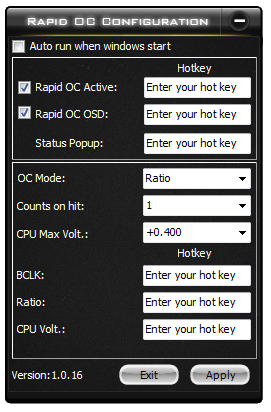
[ASR Z77 OC Software 10 - Rapid OC.png]
Timing Configurator
Aside from the weird name (I would prefer Timing Configuration Tool), the Timing Configurator is a basic variation on ASUS’ MemTweakIt utility which gives a user access to the cast majority of the memory subtimings. Again, in the world of extreme overclocking, having the opportunity to adjust these settings in the OS can help achieve those extra few points.
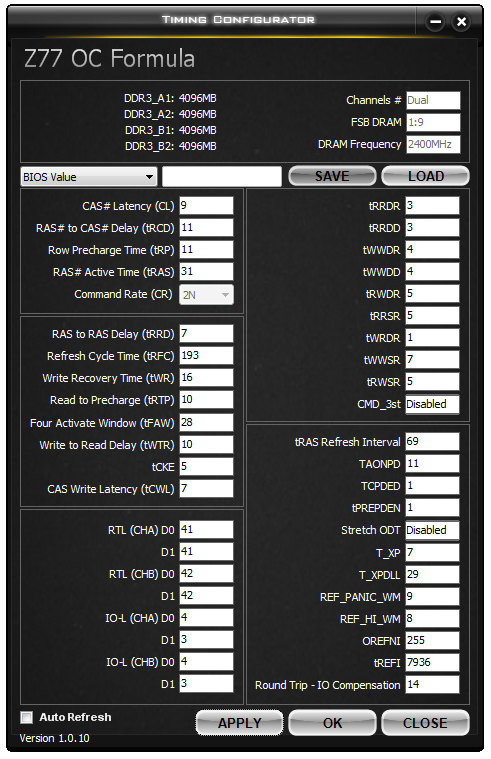
XFast USB
The stalwart of the package XFast USB also makes an appearance. XFast USB performs a small driver swap with the Intel Windows drivers in order to enable faster transfer at the expense of latency. In previous reviews this works really well with USB 2.0 and USB 3.0 under Windows 7, though in Windows 8 the default drivers already have various improvements implemented which where possible can supersede XFast USB if the hardware allows.
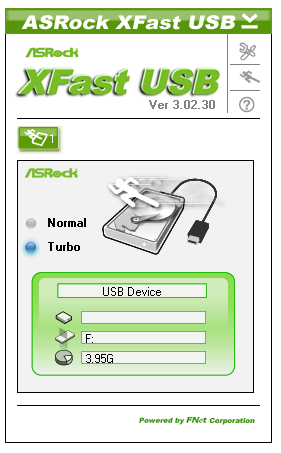
XFast LAN
Also part of the package is XFast LAN, a software based network monitoring and configuration tool. XFast LAN is a licensed and skinned version of cFosSpeed, downloadable for 10 Euro, but which ASRock has a bulk licensing deal for all their motherboards. Through XFast LAN, the user can monitor their network usage, organize which programs have higher priority (VoIP > Game > Browser > Download for example), affix online budgets to each connection, as well as a host of other utilities.


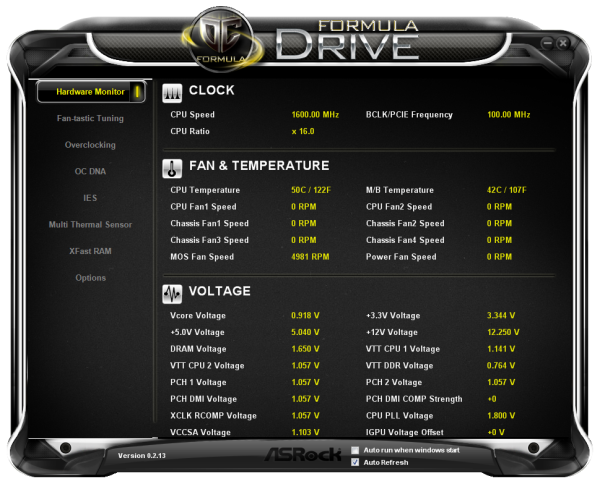
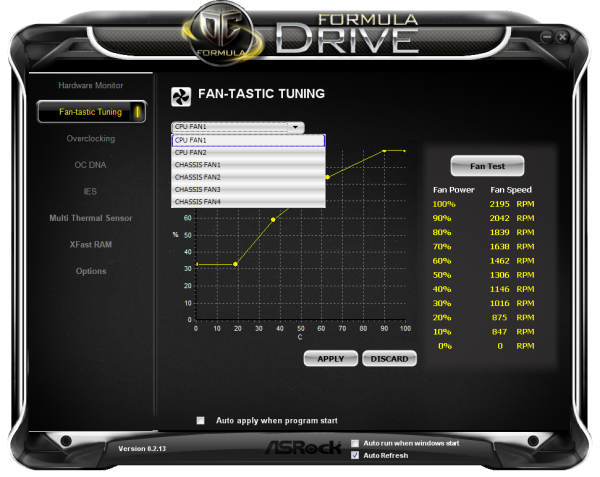
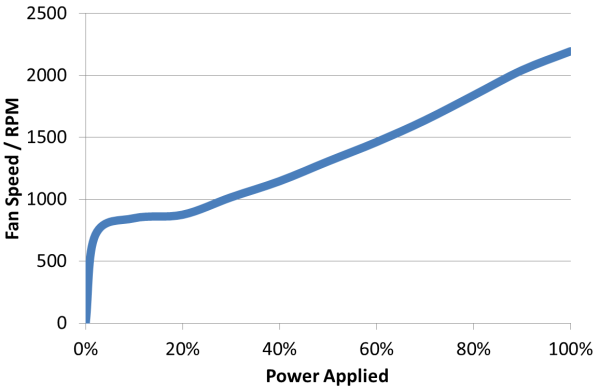

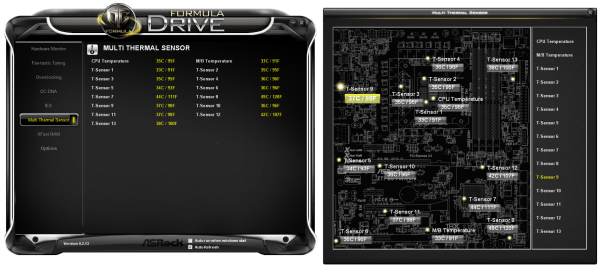

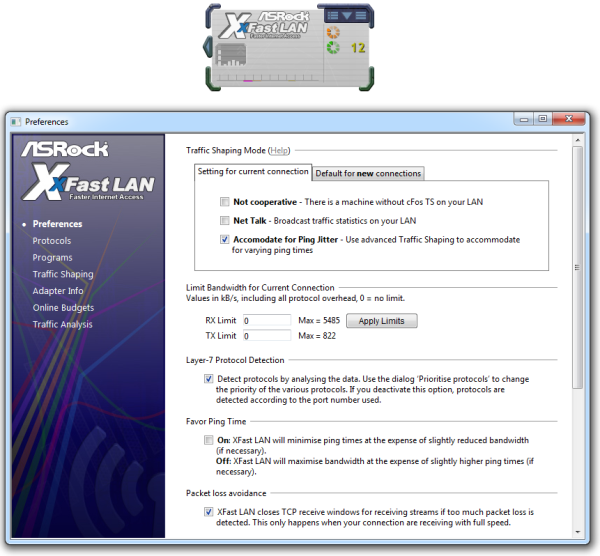

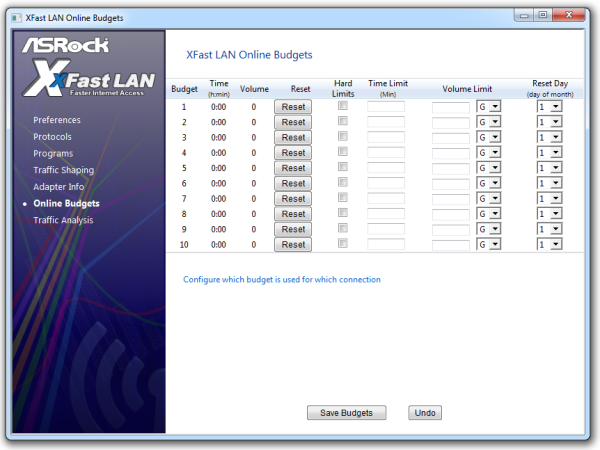














48 Comments
View All Comments
themossie - Tuesday, January 15, 2013 - link
Two SSDs using one SATA III connection will be severely bandwidth-constrained, a single SSD is already near the limits of SATA III (6 Gbps = ~600MB/sec max in practice). More SATA connections means much more available bandwidth...Get something like http://www.amazon.com/Silverstone-5-25-Inch-Conver... and roll the RAID yourself :-)
The linked drive bay converter is really great - although I wouldn't trust it with four hard drives due to heat.
ShieTar - Wednesday, January 16, 2013 - link
Thats not exactly a new development, OCZ are selling their colossus line since 2009. You could still buy one, but I think it stopped making sense a while ago, as they are slower than most single SATA6G-SSDs.There are also several PCIe-based solutions with internal RAID-0 solutions available for at least two years now. I don't see why Ian should not mention them.
Flunk - Thursday, January 17, 2013 - link
If you really want that you need to get something like the OCZ Revodrive series. Multiple SSD controllers all hooked up to PCIe. SATA's just not fast enough.NitroWare - Tuesday, January 15, 2013 - link
Theres innovative for the sake of being the bleeding edge (eg ROG) and theres innovative for making features that a vendor assumes its customers want or commercialy driven. Asrock would go in the latter.Note their answer to Ian's question about the naming Unforuntly that mentalilty is prevalient with some vendors despite what they are told by media or testers.
"I eagerly await a Z87 OC Formula which can build upon the additional features listed above. If, for a few more dollars, we got an included ASRock Game Blaster, 5 GHz WiFi or an mSATA for not much more on the price, then it will speak out to gamers and boutique system builders even more."
Even if they put those features on that doesnt automatically put it at the top of the podium.
They'd put them on and then ruin it with some feature they read on a forum or 'brainstormed'.
Compare the Z68 and Z77 Fatalilty boards - the Z68 had an almost if not perfect rear IO backplane with its 2 HDMI ports, dual GBE, switches and abundance of USB ports. They went and added DVI to the Z77. Really ? OK Lucid Virtu/multiple displays but this is an enthusiast board not a H77.
This is all Intel's 'idea' and they didnt feel a need to put a DVI on theirs, their DZ77RE has a single rotated HDMI to save space and they fited what the enthusiast wants and needs, nothing more.
They have alot of work to do on their UEFI (NTFS support, Automatic Fan Control, things that have been for granted on other brands), Their software (their fan control sw lacks error catching), production line QA and valdation lists are less comprehensive than GA/ASUS plus they need to answer customer tech support tickets or emails.
Asrock Support once told me not to use Kingston Memory when I reported a non memory related problem (faulty board) as they didnt really validate that and 'had problems' with it, a company saying things like this is unacceptable for many reasons.
Ian did not miss anything with this comprehenive review, although I am personally curious as to how sturdy their heatsink assembly is based on my experiences with their other modern boards.
I really liked the Z68 Fatalilty despite its shortcomings, the old X58 Delux seemed to work well for many people and I guess we can say this one doesnt suck either. They are really trying but then they feel they need to bring back old ghosts from the past by toying with gimics like XFast RAM rather than concentrating on core hardware and software engineering.
Have a look at their Q77 board, its a recycled H77 even still retaining their enthusiast livery and THX logo, OK then.
Anyone remeber the X58 Supercomputer? NVIDIA professional certified. Yeah excactly. Funny how that went into the wind, perhaps the licensing was expensive but that was waters even ASUS didn't put their toes into.
They know their place as a budget vendor and it shows, hence emphasis on innovations that dont cost them as much as major R&D.
IanCutress - Tuesday, January 15, 2013 - link
Since I started reviewing I've never given a gold award to a motherboard (one to ROG as a brand), and I think in some 70 odd boards I've only given three or four silver awards. Gold needs to be perfect - BIOS, software, performance, easy of use, add-ins and price. Obviously there are things we can't test, like RMA or support.But ASRock did seem to use a different way of thinking on this board - whether that's the Nick Shih influence or not I'm not sure, I've only met him once in passing.
Some boards that come out from vendors are designed for a specific customer in mind (Gigabyte H77N-WiFi) and are released to the public after the initial batch, whereas others ask users what they want. Like you, if I was given a pen and paper to design a motherboard, it would probably be very different to almost everything out there, based on what I think people needed. But compromise always comes in, and for example back panel connectors cost a fair bit, so a manufacturer might buy a thousand to keep the costs per unit down, or have a very good procurement offer for a certain type. If a designer wants something new on the rear IO, procurement might reject it for being too expensive, or it may not exist, or a manager might reject it for the BOM going over budget, or it may be rejected because a particular SI doesn't want it like that. Some model ranges are excluded from this, or someone like Intel has enough cash to do whatever they want.
Major R&D doesn't make the money - the products do. In my ROG review and interviews with staff, I found out it's taken them 7 years to break even in terms of sales vs. R&D. Very few companies are willing to do that. But it is good to see a great package now and again, and we all hope it becomes a stepping stone for the future.
Ian
Kevin G - Tuesday, January 15, 2013 - link
Well at this juncture I think it is fair to ask, how would you define the perfect motherboard? If you were to design a board, what specs and layout would it have? Any standards you adhere to or absolutely want to ignore to get the ideal product? Anything innovative you want to see on a board that you haven't yet? What price would you sell it at considering its BOM?NitroWare - Tuesday, January 15, 2013 - link
You can easily test RMA and support.RMA - check what the procedure is in place is for certain regions, heck an eyeballing of newegg comments for bugs/ dud boards/vga doesn't go astray. Arrangements vary per region.
Support - email their support or fill in a ticket with a non publication domain name.
If you get an automated 'your ticket is in the queue' message - good
If you get a human reply - better.
If no reply within a certain time period or unacceptable facepalm answer - fail
If a vendor has a online chat (Intel and Coolermaster do) do they know their own products? Does the vendor have a staffed forum?versus relying on a tech site for their forum?
If someone has an issue, ameutuer or enthusiast they are going to google their problem after all.
While I agree with you bout they thought different about this board. One cant helpt notice that someone handed them a ROG board and the breif was 'make our own version of this but dont copy it', thats not neccesarily bad though.
If a vendor is playing supply channel/logistics games with their components and that ends up affecting an enthusiast or expensive board well thats not a positive is it. Their Z68 did have easy RAM clips for example and issues such as you described come into play
One can say ASUS ROG was trying to win customers away from ASUS 'delux' or 'premium' boards where as ASR is just trying to win customers outright, or even a repeat buy.
Dominic
Assimilator87 - Tuesday, January 15, 2013 - link
Not sure if this is done in other reviews, but the majority of the conclusion was copied from the overview. Pretty lame to be honest.IanCutress - Tuesday, January 15, 2013 - link
It has been in a couple over the years. It is sometimes hard (and time consuming) to come up with 400-600 new words which essentially rewrite the overview to say the same thing in the conclusion but with a final statement. If it's severely an issue, I'll refrain from it in the future :)Ian
cmdrdredd - Tuesday, January 15, 2013 - link
WHY!? This is clearly way over $180 and targeting the $300 boards like the Maximus V Formula from Asus. Does it beat that particular board? How about the $200 Maximus V Gene? We don't know because they were not included in any testing.This board is most definitely not meant to be compared to boards under $200 but boards over it's price point.